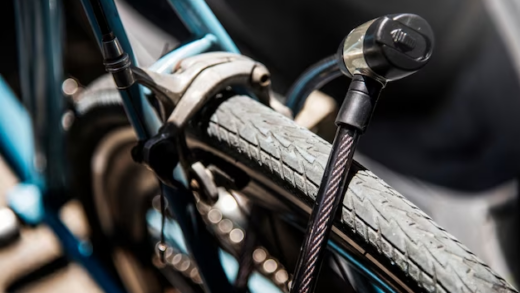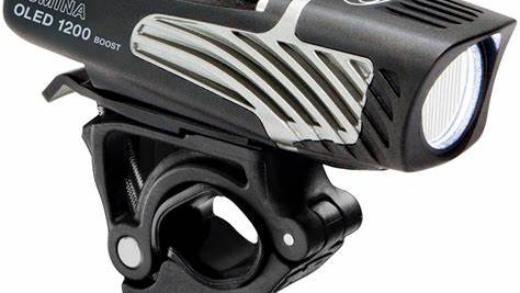Should the aspiration to possess a truly iconic and timeless bicycle stir within you, then surely the inclusion of a Peugeot model onto your roster of coveted items is imperative. This esteemed brand’s roots extend back to the era preceding the 19th century, boasting a lineage rich in the creation of numerous bicycles exuding classical allure across the annals of time.
The conundrum lies in the process of recognizing a Peugeot bicycle model, a task demanding a discerning eye. However , the crux of this challenge revolves around deciphering the bicycle’s serial number, an identifier customarily etched onto the frame. Further elucidation regarding the various facets encompassing the identification of a Peugeot bike model shall find elucidation within the expanse of this composition.
Comprehensive Guide to Identifying Peugeot Bikes
Peugeot, a reputable brand in the bicycle industry, has a consistent and systematic approach to marking their products. Serial numbers play an integral role in this identification system, providing a unique identity to every individual bike.
Where to Find the Serial Number?
Location: Peugeot bicycles typically feature their serial number on the underside of the bike’s bottom bracket. This is the part where the pedal arms are attached to the bike.
Origination: These serial numbers are not afterthoughts or added later. They are integral to the production process, ensuring that each bike can be traced back to its origin.
Characteristics of a Peugeot Serial Number
Composition: Peugeot bicycle serial numbers are typically a mix of numbers. Each combination is meticulously chosen to correspond with a specific model and production batch.
Purpose and Benefits:
- Inventory Management: Serial numbers streamline the inventory process, allowing Peugeot and dealers to quickly identify, track, and manage their stock;
- Authenticity Verification: For consumers, these numbers can confirm the genuineness of a product, especially for those considering purchasing a second-hand Peugeot bike;
- Historical Reference: For enthusiasts and collectors, serial numbers are invaluable. They can offer insights into the age and lineage of older Peugeot designs, helping to date and authenticate classic models.
Recommendations for Peugeot Bike Owners and Buyers:
- Always check the serial number: Before buying a used Peugeot bike, always verify its serial number. This ensures you’re getting an authentic product;
- Maintain a record: If you’re a bike owner, keep a note of your bike’s serial number. It can be crucial for insurance purposes, theft recovery, or resale in the future;
- Inquire with the manufacturer: If in doubt about the origin or authenticity of a Peugeot bike, reaching out to the manufacturer with the serial number can provide clarity.
The Resplendent Peugeot Bicycles of the Roaring 1920s
The dawn of the 1920s marked the emergence of a distinctive Peugeot bicycle model, etching its place in history as the earliest recognizable form. Amidst this era, a particular velo creation garnered unparalleled popularity – none other than the illustrious Peugeot P-10. Embedded within the lineage, this bicycle marvel boasts an exclusive serial cipher, an insignia of its legacy.
Akin to celestial constellations, additional two-wheeled wonders took their bow on the same temporal stage. Each, a masterpiece in its own right, conferred a unique serial emblem, a testament to the individuality woven into the fabric of their decade.
Unveiling the Distinctive Bike Models of the 1950s and 1960s
From the 1950s through the 1960s, a distinctive era emerged for bike models. Throughout this span, the company employed serial numbers consisting of six digits, serving as unique identifiers for the bicycles manufactured within this temporal expanse. These alphanumeric codes found their abode within the confines of the bottom bracket shell, nestled discreetly.
What sets these serial numbers apart is the presence of the Nervex trademark and engravings adorning the bottom bracket tube angle. These intricate inscriptions lend an air of individuality, narrating the tale of each bicycle’s origin.
Stepping into the 1950s, the company embarked on the unveiling of their renowned PC and PH models, etching their mark onto the cycling landscape. In the transformative year of 1953, the PX-10E models made their grand entrance, captivating the market’s attention. This particular iteration stood proudly at the pinnacle of two-wheeled luxury during its time of reign.
The annals of 1966 bore witness to a momentous release that bestowed an aura of distinction upon the bicycle. The company ingeniously incorporated the Olympic rings onto the seat tube, an homage to their spirited involvement in the 1964 Olympic Games. This artistic touch not only elevated the bike’s aesthetic but also celebrated the company’s active participation on the global sporting stage.
Bike Model Evolution of the 1970s
In the realm of two-wheeled wonders, the 1970s unveiled a fascinating evolution of bike models. Amidst this decade’s journey, a singular alteration graced the serial numbers of these bicycles, arriving fashionably late in its procession. Within each serial number, a unique 7-digit symphony was orchestrated, meticulously harmonizing with every bike it adorned.
It was within the confines of this illustrious decade that the company’s fortunes reached a zenith, riding on the coattails of an unprecedented bike boom. The market pulsated with an insatiable appetite for these mechanical steeds, propelling the company into a golden age of prosperity. Amidst this fervor, the Peugeot PX10 line emerged as the undeniable champions of demand, garnering the spotlight with unparalleled allure.
Amongst the luminaries of this revered line, the PX10E emerged as the quintessential racing titan, etching its name into the annals of the brand’s legacy. Standing as a paragon of engineering excellence, the PX10E commanded the tracks, exuding an aura of supremacy that resonated throughout that era’s racing circuits.
Bicycles of the 1980s Era
Every bicycle design unveiled throughout this span of ten years exhibits a subtle alteration within the inscribed serial numbers. The corporate choice was to employ serial sequences comprising eight digits, each accompanied by an appended alphabetical prefix. Coinciding with this temporal juncture, the 1950s’ entire array of fabricated models featured the inclusion of PC-10, PH-10, and PLX-10 inscriptions integrated within their respective serial codes.
Cracking the Code of Peugeot Bicycle Dating
Diving into the intriguing realm of identifying a Peugeot bicycle model unveils a captivating journey, with one of the primary avenues being the quest to unveil the year of its creation, particularly for those born in the early days of the company’s inception. Regrettably, unearthing the precise date of Peugeot bicycle models crafted prior to the 1970s remains an endeavor teetering on the edge of improbability.
In essence, this task is an intricate art form, relegated to the realm of estimations at best, unveiling the year of origin with a degree of precision that could be considered quite remarkable. Hence, it’s an established reality that deciphering the age of an antiquated Peugeot model poses a considerable challenge, a puzzle so elusive that even the original proprietors grapple with recalling the exact year of their acquisition.

The process of dating a bicycle can be confined within a span of a couple of years from its inception, leaning heavily on the structural framework of the bicycle itself along with its constellation of complementary components. However, the older iterations of these two-wheeled relics carry a distinctive secret etched beneath their frames, a serial number concealed within the underbelly of the bracket, serving as the all-important linchpin.
Embarking on a temporal journey, Peugeot bicycle models adorned with six-digit serial numbers emerge as products of the 1960s, a decade steeped in history and nostalgia. Meanwhile, their brethren, characterized by seven-digit serial numbers, witnessed their genesis during the 1970s, a period that resonates with a different cultural and sociopolitical landscape. The introductory digit within the serial number stands as an enigmatic cipher, whispering tales of the very year in which the bicycle took its first breath. A prime exemplar comes to light with a serial code akin to 24096758, a code that unveils its birth in the year of 1972.
However, like all riveting narratives, there exists a twist in this chronicle. Some instances arise where the serial number sheds light on the year of frame fabrication, an epoch preceding the bicycle’s complete assembly. In such instances, prudent comparison between the serial numbers and dates, occasionally etched onto the rim, hubs, and sundry other parts of the bicycle, becomes an indispensable compass in navigating this labyrinthine realm of dating vintage bicycles.
Conclusion
Mastering the skill of recognizing Peugeot bicycle models holds paramount importance if the aspiration of possessing one resides in your mind. This marque holds an emblematic status and stands as among the most favored vintage bicycles you can possess. However, unraveling the precise moment of its creation presents itself as a daunting yet rewarding endeavor. Ultimately, the possession of a Peugeot bicycle model is hailed as an esteemed honor for any bicycle enthusiast.






